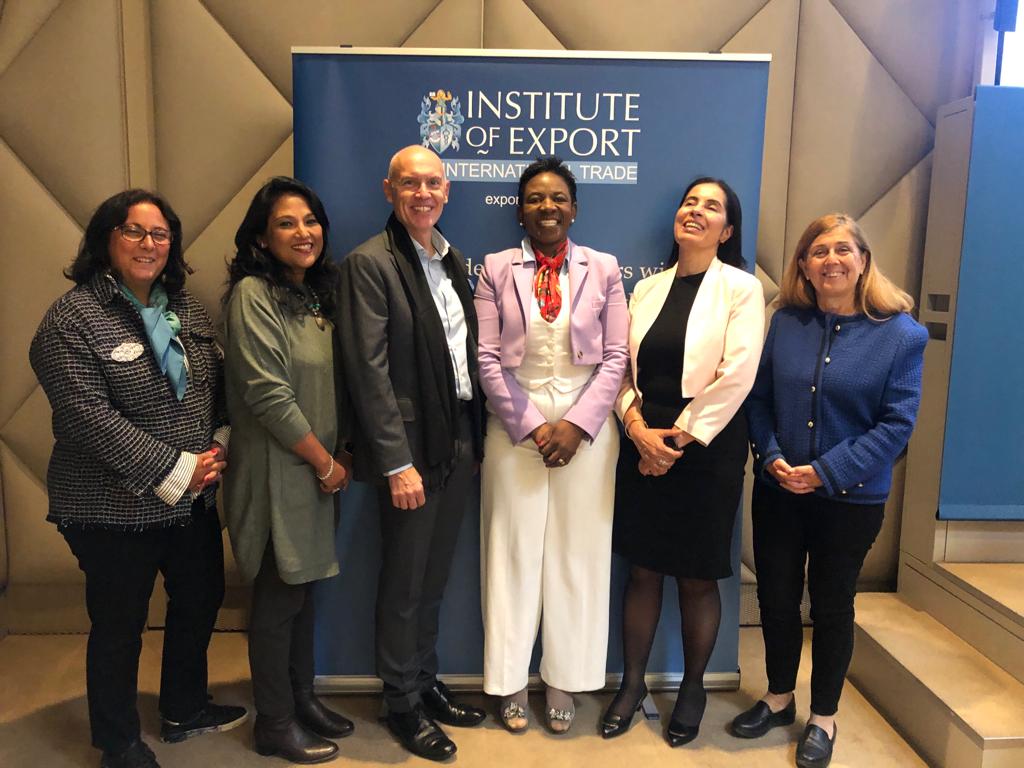
At a WTO Public Forum event, four top female leaders from the private and public sectors discussed gender equality and how best to increase female participation in international trade.
The panel, entitled ‘Engendering gender equality in international trade: inclusive policies and initiatives’, was moderated by Institute of Export & International Trade’s (IoE&IT) trustee director Professor Sangeeta Khorana, and featured a lively discussion on the challenges, future and solutions of female empowerment in international trade.
Challenges and solutions
Perez Ochieng, founder and CEO of SACOMA Global Food Innovation, talked about the difficulties of working and trading across different worlds. Ochieng is a European with African origins whose company trades in the UK, EU and African markets.
Simonetta Zarrilli, chief of the trade, gender and development programme of the UN Conference on Trade and Development (UNCTAD) talked about how the pandemic had affected female employment.
Informal employment
“Many people were dismissed when the pandemic started. The first to be dismissed were casual and seasonal employees. Women represent 40% of global employment, but 60% of part-time workers. They were often the first to be dismissed,” she said.
According to Zarrilli, women often work in the “informal” sector, and as a result are usually out of reach for social programmes aimed at people who are ‘out of work’.
She also said that women entrepreneurs struggle to access the finance needed to keep their businesses afloat, going so far to say that access to finance was the biggest obstacle they faced as business owners.
Increased focus
Sounding a more positive note, Anoush der Boghossian, head of the trade and gender unit at the World Trade Organization (WTO), said that governments were increasingly focusing on female entrepreneurs – with policies such as direct cash transfers, subisides for female farmers and deliberately targeting low-income rural women.
There had been 25 years of government incorporating specific chapters on gender into trade deals, with around a third of treaties in force including at least one specific reference to gender.
However, Ochieng noted that while such initiatives were welcome, there was often a gap between policies, people and implementation.
Money needed
“You are empowering women with knowledge, but implementation costs money and they don’t have it. So they don’t have power to implement” she commented.
“They’ve been trained, they know what to do, how are they going to do it?”
‘Mind the gap’
Dr Mona Shrestha, CEO of consultancy Enterprise for Management, Economic Reform & Gender Equality (EMERGE), agreed there was an implementation gap and called for Trade4Aid programmes to consider structural problems, rather than simply treating the symptoms of those problems.
“In London, we say ‘mind the gap’ on the underground. We need to start thinking about the gender gap in international trade and turn ambition into action on creating a more inclusive future.”
Zarrilli noted that treaties in South America and Africa had references to gender equality and cited research that regional integration has created new employment opportunities for women.
She added, however, that many such jobs were at the lower level – typically in manufacturing and service jobs that imply limited skills and access to managerial positions.
The panel ended with a call-to-action for all attendees to redouble their efforts get more women working in international trade.
The IOE&IT is constantly seeking feedback on gender equality in international trade. You can be part of the conversation here.



